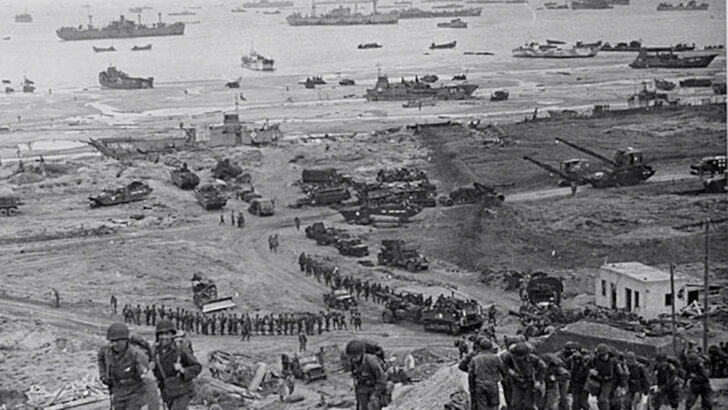D-Day: The Oral History
by Garrett M. Graff (Monoray / Octopus Publishing, £25.00 / €30.00)
D-Day was the turning point in World War II. On that day, June 6 1944, 160,000 troops stormed the Normandy beaches.
They set up a battle front of more than sixty miles over five different beaches – their code names forever immortalised in history – Utah, Omaha, Gold, Juno and Sword. As a result of the ensuing fighting in the towns, villages and hedgerows of northern France, some 15,000 members of the invading and defending forces did not live to see the end of that ‘longest day’. It marked the beginning of the liberation of Europe from Hitler’s Third Reich.
Preparing
In preparing this book for publication Garrett M. Graff collected some 5,000 personal stories and oral histories from combatants and participants. He presents interviews with leaders such as Winston Churchill, Dwight Eisenhower, George Marshall, Bernard Montgomery, Omar Bradley and Admiral Bertram Ramsay. But the vast majority of those informative interviews are with rank-and-file members of the various services.
He also provides similar interviews with members of the German forces defending the ‘Atlantic Wall’. He dismisses four myths that emerged from D-Day: (1) that it almost failed, (2) that the Atlantic Wall (German defences) was impenetrable, (3) that Omaha beach was a killing zone, and (4) that the beaches the British and Canadians stormed were less hazardous than the others.
The whole north Atlantic Ocean area appeared to be filled with a succession of depressions, any of which could blow into violent storms”
One of the most tantalising dilemmas faced by Eisenhower, who was responsible for initiating the landing in France, was to decide on the suitability of the weather for ‘Operation Overlord’.
In the event on June 4 Captain J. M. Stagg, meteorologist to the Supreme Command reported: ‘The whole north Atlantic Ocean area appeared to be filled with a succession of depressions, any of which could blow into violent storms. Thus the June 5 launch of the invasion force had to be cancelled.
General Bernard Montgomery subsequently recalled what happened next: “And then a young Irishwoman, Maureen Sweeney, a postal clerk who worked with her husband, the keeper of the Blacksod Lighthouse on the north-western coast of Ireland, one of the first places that detect looming Atlantic weather approaching the British Isles, posted data on the night of June 4 that caught the attention of Stagg’s team.”
Maureen Sweeney subsequently wrote of that time: ‘Our reports were first to show any change coming in for good weather or bad weather. There was a query from London at around 11 o’clock. And then there was a second query. A lady with a distinct English accent requested me to ‘Please check. Please check’.
Figures
We began to look at the figures again. We checked and rechecked and the figures were the same both times so we were happy enough.”
These measurements provided by Maureen allowed Eisenhower to order the invasion of France on 6 June.
Apart from her role in this key historical event in the twentieth century, Maureen Flavin was a remarkable person in her own right. Born on June 3 1923 at Knockanure, near Listowel, Co Kerry, she was educated at the local national school and the Presentation Convent in Listowel.
The availability of its detailed measurements proved to be crucial for the success of ‘Operation Overlord”
Aged 18, she secured an appointment as a clerk in a Department of Posts and Telegraph’s post office at Blacksod in Co Mayo. She discovered that the post office operated a weather station and one of her duties was to provide daily weather readings to the British Met Office via telegraph.
Outbreak
From the outbreak of World War II, the station had to provide hourly weather reports. As the first to warn of approaching stormy, westerly weather systems, the availability of its detailed measurements proved to be crucial for the success of ‘Operation Overlord’.
Maureen married Ted Sweeney, the lighthouse keeper, in 1946 and they continued to operate the weather station until it was automated in 1956. She also succeeded as the postmistress at Blacksod retiring in the early 2000s. She was honoured in 2021 by the US Congress for her role in the success of the landing in France. She died aged 100 on December 17 2023.


 The D-Day landings in progress, the losses were large
The D-Day landings in progress, the losses were large 